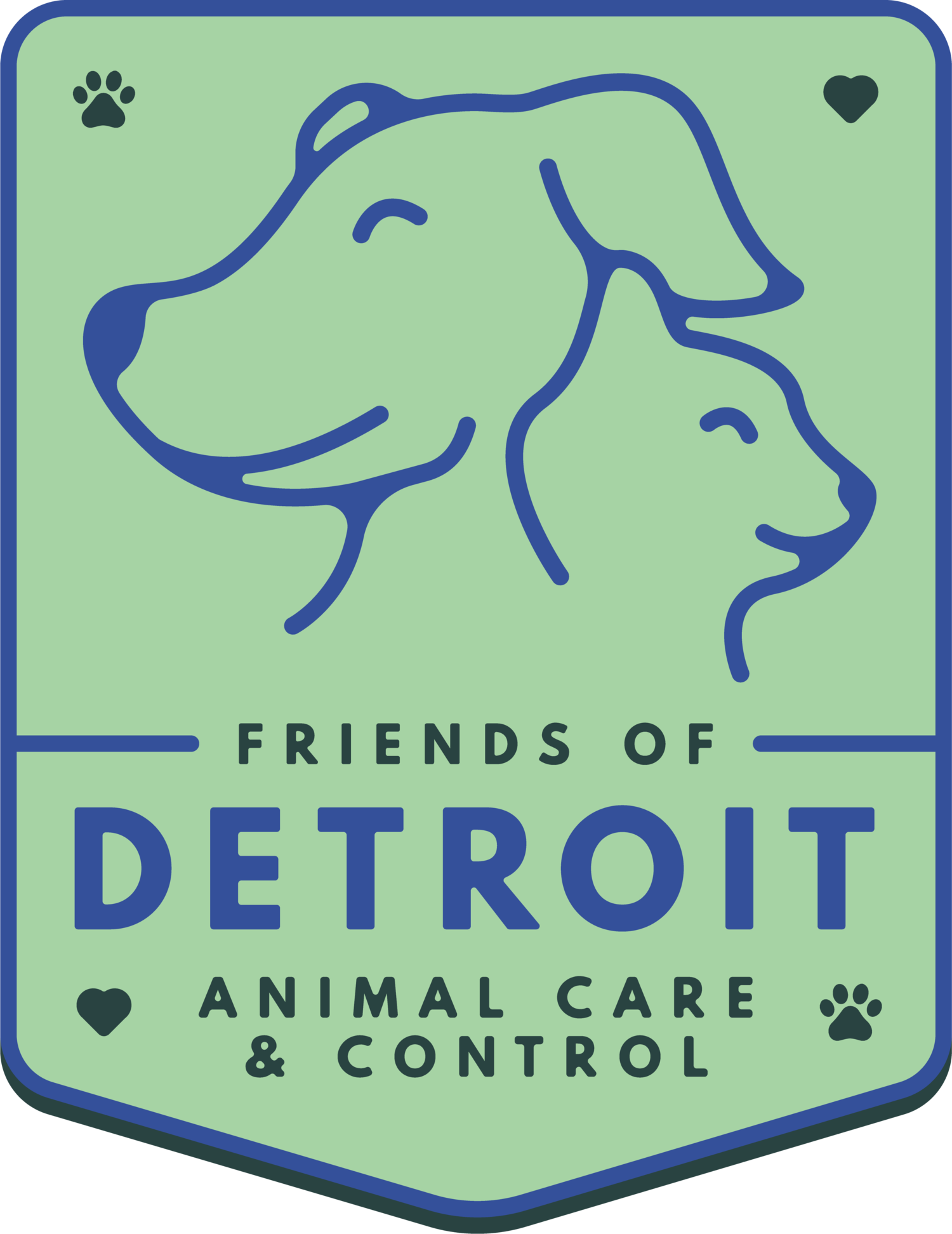Keeping Your Dog Happy and Healthy in the Yard
Why Supervision and Smart Setups Matter—Even When It’s Warm Out
At Friends of Detroit Animal Care and Control (FoDACC), we strongly recommend that all dogs live indoors with their families. Dogs are social, sensitive animals who thrive on companionship, safety, and routine—things they just can’t get living outdoors full-time.
That said, we know that during warmer months, it’s natural to let your dog spend more time outside. Sunshine and fresh air can be great for dogs—if the yard is set up thoughtfully. Whether your dog is outside for a few minutes or a few hours, here are some important tips to keep them happy, healthy, and safe.
No Heavy Chains—Ever
If your dog must be tethered, never use a heavy chain. Chains are not only physically uncomfortable, they can damage your dog’s neck, restrict natural movement, and cause injury or strangulation if the dog gets tangled.
Instead, use a lightweight cable tie-out designed for dogs and attach it to a comfortable nylon collar or harness—never a collar that tightens, like a choke chain or prong collar. The goal is to keep your dog secure without risking harm or distress.
One safer alternative to a ground stake is running a cable overhead between two secure points, like trees or posts, and attaching your dog’s tie-out line to a trolley system along that cable. This setup allows your dog more freedom to move around without becoming tangled or pulling against a fixed stake. It also keeps the line off the ground, reducing the risk of choking, tripping, or dragging hazards.
Fresh Water Is a Must
Your dog should have access to clean, cool water at all times. In the summer heat, water bowls can evaporate quickly or tip over, so check often. Consider using a weighted or spill-proof bowl and placing it in the shade.
You can even add ice cubes on hot days to keep the water cooler longer. Frozen treats are a great option on a hot day, too. We have several ideas on our enrichment page that you can make at home. [Button to enrichment-kits page]
Shelter and Shade Matter
Even if it’s not blazing hot, direct sun and extreme weather can be dangerous. Make sure your dog has access to shade and shelter—a covered porch, a well-ventilated doghouse, or natural shade from trees can all work.
A good dog house should be elevated off the ground, have a roof that doesn’t trap heat, and allow your dog to stretch out comfortably. Never rely on a crate as shelter—it can quickly become too hot and lacks airflow.
Make sure your dog has a place to take a break from the sun and heat.
Keep It Fun
Dogs are intelligent and curious. If left outside with nothing to do, they can become bored, anxious, or destructive.
Provide toys, chews, or puzzle feeders to keep them mentally stimulated. Rotating toys every few days can help maintain interest and reduce unwanted behaviors.
Secure Your Fence—or Use Coyote Rollers
If your fence isn’t tall enough to contain your dog, don’t rely on tethering as the only option. Consider installing coyote rollers—easy to install spinning PVC pipes that prevent dogs and wildlife from climbing over—so your dog can roam freely and safely in your yard.
Protect from Pests
Dogs who spend time outside are at higher risk for parasites. Keep dog poop picked up daily to avoid flies. Use fly traps or fly paper to help prevent painful fly strikes, especially around the ears.
Also be sure your dog is on monthly flea, tick, and heartworm preventatives. Outdoor dogs are also more likely to pick up intestinal parasites. Ask your veterinarian which deworming products are best for your dog’s age, weight, and health. Remember: dewormers do NOT work on heartworms that live in the heart and are fatal if not treated.
Stay Up to Date on Vaccinations
Spending time outdoors—especially in areas where other animals may pass through—means exposure to contagious diseases like parvovirus, distemper, and leptospirosis (which can spread to humans!).
Make sure your dog is fully vaccinated and stays current on all recommended vaccines, including rabies (which is also legally required). Your veterinarian can help you determine the right vaccination schedule for your pet.
Make Sure Your Pet Has ID
Even if your yard is secure, accidents happen. Kids can leave gates open, dogs can dig out or climb over fences, and fireworks can cause dogs to bolt if frightened.
Always make sure your dog wears a collar with ID tags that include your phone number. You can even write your phone number on her collar with a marker if you don’t have a tag.
In addition:
Have your pet microchipped and keep the contact info up to date
License your dog with the City of Detroit (or your local municipality) to help ensure a safe and legal return
Supervision Is Still Key
Even the safest backyard setup needs regular checks. Water can spill, toys can break, or something unexpected like a fence falling down might stress or injure your dog. The best practice is to supervise your dog outside or, even better, join them and enjoy the time together.
Final Thoughts
Your dog is a beloved family member and wants to be with you, not outside by herself. While outdoor time can be healthy and fun, dogs should never live outside full-time.
If your dog spends time in the yard, make sure it's a safe, shaded, and stimulating environment—and always bring them back inside to rest, relax, and feel like part of the family.




